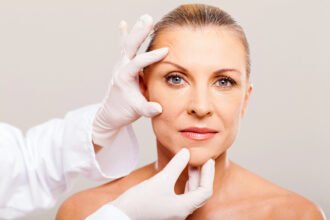Cosmetic surgery is a type of medical procedure that is performed to improve the appearance of a patient. Cosmetic surgery can be used to correct physical deformities or to enhance one’s natural attractiveness.
Cosmetic surgeries are also sometimes used to change a person’s gender expression, but that is not considered cosmetic surgery by many people. Consult an oculofacial surgeon to quell any doubts you might have.
What is cosmetic surgery and how does it differ from plastic surgery?
Cosmetic surgery involves altering a person’s appearance to improve their appearance, or to change the way they look.
The term “cosmetic surgery” is a broad term that can refer to several types of procedures. The most common type is plastic surgery, which is the use of medical technology (such as lasers, needles, and incisions) to reshape the body in ways that enhance its appearance.
Cosmetic surgery may be a form of plastic surgery that corrects flaws in people’s faces or bodies. It may also be a procedure done to alter one’s body image by changing it through aesthetic enhancements. Cosmetic surgery can be done on almost any part of the body, including the face and breasts, buttocks, eyelids, ears and nose, hands and feet — all of which are considered “cosmetic.”
In contrast to plastic surgery, which uses medical devices to alter a person’s appearance from within their skin (or from outside the body), cosmetic surgery uses only medical tools such as scalpels and sutures.
Plastic surgery is the type of cosmetic surgery that involves reshaping and changing how someone looks through procedures such as breast augmentation, nose reshaping, liposuction, and eyelid surgery. Plastic surgery can also involve adding or removing parts of the body such as an arm or leg in cases where there was a premature loss of tissue due to trauma or disease.
Cosmetic surgery differs from plastic surgery because it has traditionally been used for aesthetic reasons only rather than for functional purposes.
What are the most common types of cosmetic surgery?
Cosmetic surgery, also known as plastic surgery, is a medical specialty that deals with the reshaping and reconstructing of the body for aesthetic reasons. The goal of cosmetic surgery is to improve the patient’s appearance.
Cosmetic surgery is performed on both men and women for a variety of reasons: to enhance physical attractiveness, correct congenital abnormalities, alter facial characteristics due to trauma or disease, improve self-esteem and confidence levels, restore youthfulness, reduce the effects of aging, and/or enhance the sexual appeal.
Many factors are considered when determining if cosmetic surgery will be beneficial: age, gender, health issues/disorders, lifestyle choices (including smoking), height/weight ratio, and ethnic background.
The most common procedures used by surgeons include liposuction, breast augmentation (breast enlargement), eyelid surgery (blepharoplasty), and tummy tuck (abdominoplasty). Other procedures commonly performed include facelifts (facelifts), Botox injections (botox), and hair transplants (hair transplant). Reconstructive surgery also falls into this category.
Cosmetic procedures can be performed on any part of the body, but are more commonly associated with facial features and skin. The most common areas of cosmetic surgery include:
- Face (including nose, lips, cheeks, and chin)
- Neck (including jawline)
- Breasts (including reduction/augmentation)
- Hips (including buttock augmentation)
- Buttocks (also called Brazilian butt lift)
Is cosmetic surgery harmful?
Cosmetic surgery has risks and side effects which we’ll discuss shortly. Before that, you should know that there are also risks from anesthesia to account for.
Anesthesia carries an increased risk of complications during and after the procedure itself. Your doctor will try to minimize these risks by using only local anesthesia when possible, which means that very little numbing medication is needed at all times during the procedure itself.
If you choose general anesthesia instead, there’s a greater risk of complications because general anesthesia requires the use of more powerful drugs that can cause long-term side effects.
What are the disadvantages or side effects of cosmetic surgery?
Cosmetic surgery can be beneficial to people who are dissatisfied with their appearance. However, cosmetic surgery is not without any risks. Some potential risks come with cosmetic surgery.
One of the potential risks of cosmetic surgery is the possibility of complications. Complications can include infections, bleeding, damage to vital organs, and nerve damage. Complications can also occur during or after the procedure itself. The most common complication is swelling and bruising that occurs after a procedure.
Another risk of cosmetic surgery is infection after plastic surgery or other procedures done by plastic surgeons such as breast augmentation, rhinoplasty, tummy tuck, circumcision, or liposuction.
A final potential risk of cosmetic surgery is a possible change in appearance after plastic surgery that may not be desirable for some people such as changes in facial structure due to excess skin removed during a facelift procedure or changes in body proportions due to excessive fat removed during liposuction.
Wrapping up
Cosmetic surgery is the process of altering a person’s physical appearance through the use of surgical techniques. It is used to improve or restore a person’s appearance and can be used to change various aspects of the body, including skin, hair, lips, eyes, and body shape. The procedure may involve cutting, piercing, tightening, or removing tissue and bones.
The most common types of cosmetic surgery include breast augmentation, liposuction, tummy tucks, and facelifts. Cosmetic surgery is generally classified as elective (done for non-medical reasons) or reconstructive (done to correct medical problems).










